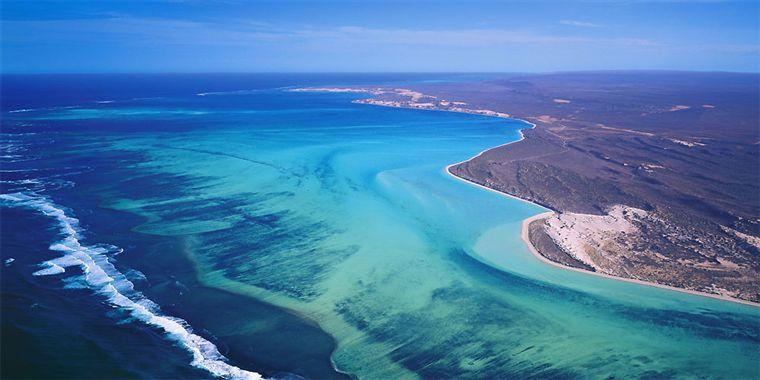
These little brown dots had our researchers puzzled until they took a closer look
The pristine waters of the Ningaloo Reef off the coast of northern WA are home to a huge array of marine life. From sea turtles to dugongs and the world’s biggest congregation of whale sharks. It’s also a huge coral reef extending over 300 km. The shallow lagoons and deeper offshore waters create a diverse collection of habitats making it a UNESCO World Heritage Area.
This underwater wonderland is so big, however, that discovering all its various nooks and crannies is a big job. Thankfully we have some undersea explorers on the job.
Underwater explorers

Photo of Starbug X in water
It was with this impressive tech that on their latest mission, scientists were able to discover a field of mushroom corals
On a recent trip our Ningaloo Outlook researchers stumbled across a field of corals the like of which have never been seen in such abundance before.
Initially a mass of little brown dots was detected with towed video camera from a research sonar vessel mapping the area but the researchers didn’t know what these dots were. So the team went back for a closer look.
Using our underwater robot called Starbug-X, they discovered a deep-water community of more than 12 million mushroom-shaped corals. The corals, called Cycloseris distorta were found in water depths of 40 metres and are so dense, it would be similar to half of Australia’s entire population standing shoulder to shoulder on Bondi beach.
While such ‘mushroom corals’ have been reported in other areas including the GBR and the off the Galapagos Islands, this appears to be the largest group discovered.
The magic of the mushrooms

Close up of the mushroom-like fragments of Cycloseris distorta © Anne
While they’re not hallucinogenic, mushroom corals are pretty special. They’re part of a group of hard coral known as Scleractinians which are reef-building corals and provide the 3D structure many corals reefs need to grow.
They’re small (roughly the size of a 50 cent piece) and round like a mushroom but they have lots of grooves along them kind of like the petals of a flower and a small mouth in the centre. Unlike other corals that spawn to reproduce, the mushroom corals’ grooves or segments break off and establish themselves as a new organism. This is likely why this community in the Ningaloo Reef is so densely populated.
The sand where the corals have set-up camp is relatively loose so the corals shuffle around on the ocean floor as the waves ebb and flow. Even in turbulent storm conditions, the corals can quite literally go with the flow.
Another cool feature these little folks have is if they are tipped over by a storm or big wave, they puff themselves up to help push themselves back up the right way with their mouths facing upwards.
The Goldilocks zone

Image: Western Australian Department of Parks and Wildlife
Like most corals, mushroom corals get their food from the sun using photosynthesis. This means that they can’t be water that is too deep for the light to reach them. But shallow waters are more susceptible to rough conditions, especially on the Ningaloo Reef where storms are common.
So the reason this community is so big in this area is likely because they’re found themselves the perfect environment to prosper, also known as the Goldilocks zone. It’s not too deep, not too shallow, but just right.
Now that they’ve found this perfect home, the corals are reproducing and creating a great little community. You know, great schools, close to public transport and lots of parks.
Up until now there has been relatively little research conducted on the deep reef habitats at Ningaloo. However, what we do know from the studies like this one is that that these areas support abundant, highly diverse, corals, sponges and marine life. Investigating these areas of the reef is critical to building our understanding of the reef so that we can measure the long-term trends in ecosystems and the role of human influences on them.
A positive outlook
Ningaloo Outlook is a BHP and CSIRO marine research partnership investing $5.4 million over five years to gather new knowledge on the Ningaloo Reef and its important ecological values.


Pingback: Discovery of 12 million little solitary corals at Ningaloo - Ningaloo Outlook